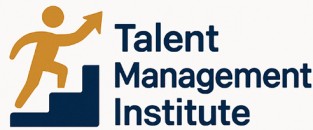
The evolving role of a Chief People Officer
Adapting to New Challenges in Today's Workplaces
The role of a Chief People Officer (CPO) has significantly evolved with the changing dynamics of the workplace. As companies strive to foster distinctive, inclusive, and efficient organizational cultures, the CPO has emerged as a strategic leader in steering these efforts. Responsible for crafting people-centric business strategies, CPOs focus on enhancing the employee experience across all touchpoints.
Strategic Influence in Leadership and Culture
Today’s CPO is a key player in shaping a company's culture and driving human resource strategies that align with long-term business objectives. This role pushes beyond traditional HR functions, requiring a proactive approach in response to rapid business change and development of leadership capabilities. CPOs act as both strategists and executors to ensure the organization’s success through effective talent management and employee engagement initiatives.
Driving Organizational Performance in a Competitive World
By prioritizing talent management and leadership development, CPOs help their organizations not only attract but crucially, retain top talent. The role calls for an intricate balance of addressing immediate workforce needs while setting the stage for future growth and adaptability. Building a resilient talent pipeline is essential, as is fostering a climate of continuous improvement and innovation within the workforce.
In understanding the full gamut of what the chief people officer encompasses, recognize that it is a role that bridges the gap between human resources and executive leadership. Explore more about how these vital roles in human resources shape the future of work in continually evolving landscapes.
Key responsibilities of a Chief People Officer
Core Responsibilities for Effective Leadership
The Chief People Officer (CPO) plays a pivotal role in shaping the organizational landscape, particularly when it comes to the core responsibilities that ensure the seamless operation of a business. With a focus on nurturing a culture that enhances employee engagement and drives performance management, the CPO lays the foundation for an inclusive and thriving workplace.
The CPO's leadership in talent acquisition and employee development is paramount. This involves formulating strategies to attract top talent while balancing the long-term growth of current employees. As organizations aim to build a diverse and inclusive environment, the CPO spearheads initiatives that support these goals.
Driving Employee Engagement
CPOs understand that employee engagement is closely tied to performance outcomes. They are tasked with creating a company culture where employees feel valued and motivated. This goes beyond traditional human resources practices, pushing towards a more holistic approach where employee experience is centered. By fostering open communication and providing necessary resources for development, CPOs ensure that everyone in the organization can thrive.
Promoting a Strong Company Culture
The CPO must cultivate a culture that resonates throughout the company, advocating for values and visions that align with the organization's objectives. This cultural alignment is crucial in maintaining a cohesive work environment where shared goals can lead to shared successes. Their role often bridges the gap between employees and leadership, ensuring that both sides are heard and understood.
Implementing Strategic Performance Management
Performance management is another critical responsibility. CPOs make strategic decisions that impact the business's ability to innovate and compete. By setting clear performance metrics and providing feedback, CPOs promote an environment of continuous improvement. This is a dynamic process, shaped by the changing needs of the organization and its people, ensuring that the company can adapt and thrive in various business climates.
For a deeper understanding of the intricate responsibilities involved in this role, explore the role of pre-screening job interviews in talent management and how it influences effective talent acquisition strategies.
Talent acquisition and retention strategies
Effective Strategies for Attracting and Retaining Top Talent
In today's competitive business environment, the role of attracting and retaining top talent rests heavily on the shoulders of the Chief People Officer (CPO). This responsibility is critical in shaping the future of any organization. With the fluid dynamics of the modern workforce, CPOs and other people officers must devise clever strategies to ensure the acquisition and retention of key personnel who can drive company growth. Talent acquisition goes beyond just filling open positions. It's about building an organization that can draw in candidates who match the company's culture and business goals. A CPO must work closely with human resources and leadership teams to create a company culture that appeals to potential employees. This involves understanding the long-term vision of the business and aligning it with the human element of the workforce. The effective development of talent acquisition strategies also requires staying ahead of industry trends and understanding what motivates current and potential employees. Competitive compensation packages, employee engagement, an inclusive work environment, and opportunities for professional development are just a few elements that can make a company attractive to top talent. The CPO must leverage technology as a vital tool in strategizing talent management. With numerous software solutions available, streamlining recruitment processes, enhancing employee engagement, and improving performance management is easier. Crafting a strategic workforce plan can be extremely beneficial in this regard. For a deeper insight into creating such effective workforce strategy maps, consider exploring this resource. Retention strategies are equally significant. A continuous focus on employee experience is crucial. Employees are more likely to stay with a company where they feel valued and have opportunities for growth. Regular check-ins, feedback systems, and creating pathways for career advancement are essential components of this structure. CPOs who successfully develop both acquisition and retention strategies focus on creating an environment where top talent can thrive. They recognize the vital role of human resources in fostering a supportive and progressive company culture that not only attracts but also retains talented individuals. In doing so, they position their organization for sustained success.Building a diverse and inclusive workplace
Fostering an Inclusive and Diverse Workforce
Creating an inclusive and diverse workplace is more than a moral imperative; it has turned into a business necessity that directly impacts the company's performance and employee engagement. The role of a Chief People Officer (CPO) in fostering this environment is paramount. A CPO is entrusted with the responsibility of embedding diversity into the organization's culture. This includes developing strategies that attract talent from various backgrounds, which enriches the team's perspectives and fosters innovation. By promoting diversity, companies can tap into a vast pool of talent and enjoy the benefits of a range of ideas and experiences. To successfully build a diverse workplace, a people officer must:- Evaluate existing policies and practices to ensure they are inclusive and equitable.
- Develop training and development programs that improve cultural competency within the organization.
- Create an open dialogue where employees feel comfortable sharing their experiences and ideas.
Leveraging technology in talent management
Utilizing Technology for Enhanced Talent Outcomes
In the contemporary business landscape, technology plays a pivotal role in the effective implementation of talent management strategies. Chief People Officers are at the forefront of integrating innovative solutions that bolster human resources operations within the organization. The CPO's responsibility extends to embracing advanced tools that facilitate not only talent acquisition but also improve the overall employee experience. Modern companies increasingly rely on sophisticated HR software that streamlines processes ranging from recruitment to performance management. These tools provide a comprehensive platform for CPOs to monitor employee engagement, a crucial metric that reflects the health of company culture.- Talent Acquisition Platforms: For CPOs, adopting smart recruitment platforms can significantly enhance their capacity to attract and retain top talent. These systems often incorporate AI-driven algorithms to sift through a vast pool of candidates, making the acquisition phase more efficient.
- Employee Engagement Tools: Maintaining high levels of employee engagement is essential for sustaining a productive workplace. Technology enables the CPO to measure engagement levels in real-time, allowing for timely interventions to address any arising issues.
- Performance Management Systems: Employing centralized performance management systems helps in providing structured feedback and supporting the continuous development of employees. This tech-driven approach aligns with the role of nurturing talent for long-term retention.
Challenges faced by Chief People Officers
Navigating the Complex Landscape of HR Challenges
The role of a Chief People Officer (CPO) involves numerous responsibilities, and navigating the complex landscape of human resources challenges stands prominently among them. These challenges are diverse and demand a strategic approach combined with a deep understanding of organizational dynamics and human behavior. The CPO must swiftly adapt to ever-changing work environments while maintaining a focus on employee engagement and company culture.
The need for effective leadership in managing talent and ensuring employee satisfaction cannot be overstated. One of the primary hurdles CPOs face is balancing the company's goals with the diverse needs of its workforce. This involves fostering positive employee experiences and driving performance management so that both individuals and the organization benefit from a thriving organizational culture.
- Continuous Talent Development: In a competitive business environment, ongoing talent development is crucial. A CPO must ensure that training and development opportunities are aligned with the company's long-term strategic objectives. This requires understanding the evolving needs of employees and adapting development programs accordingly.
- Adopting Technological Innovations: As highlighted in previous sections, leveraging technology plays a significant role in modern talent management. CPOs must navigate and utilize various human resource information systems and tools that aid in streamlining talent acquisition and employee management processes.
- Maintaining Diverse and Inclusive Environments: Building a diverse and inclusive workplace brings its own set of challenges. The CPO must work closely with leaders across the organization to establish policies and initiatives that promote diversity and foster an inclusive culture that reflects the values of the company.
Furthermore, CPOs grapple with the task of aligning people strategies with overall business plans. This involves collaborating with other key leaders, such as the Chief Human Resources Officer (CHRO), to ensure that human resource strategies contribute positively to the business's success. The challenges faced by the Chief People Officers are numerous, but with a proactive mindset and a strategic approach, they can effectively lead their organizations towards achieving sustainable growth and employee satisfaction.













